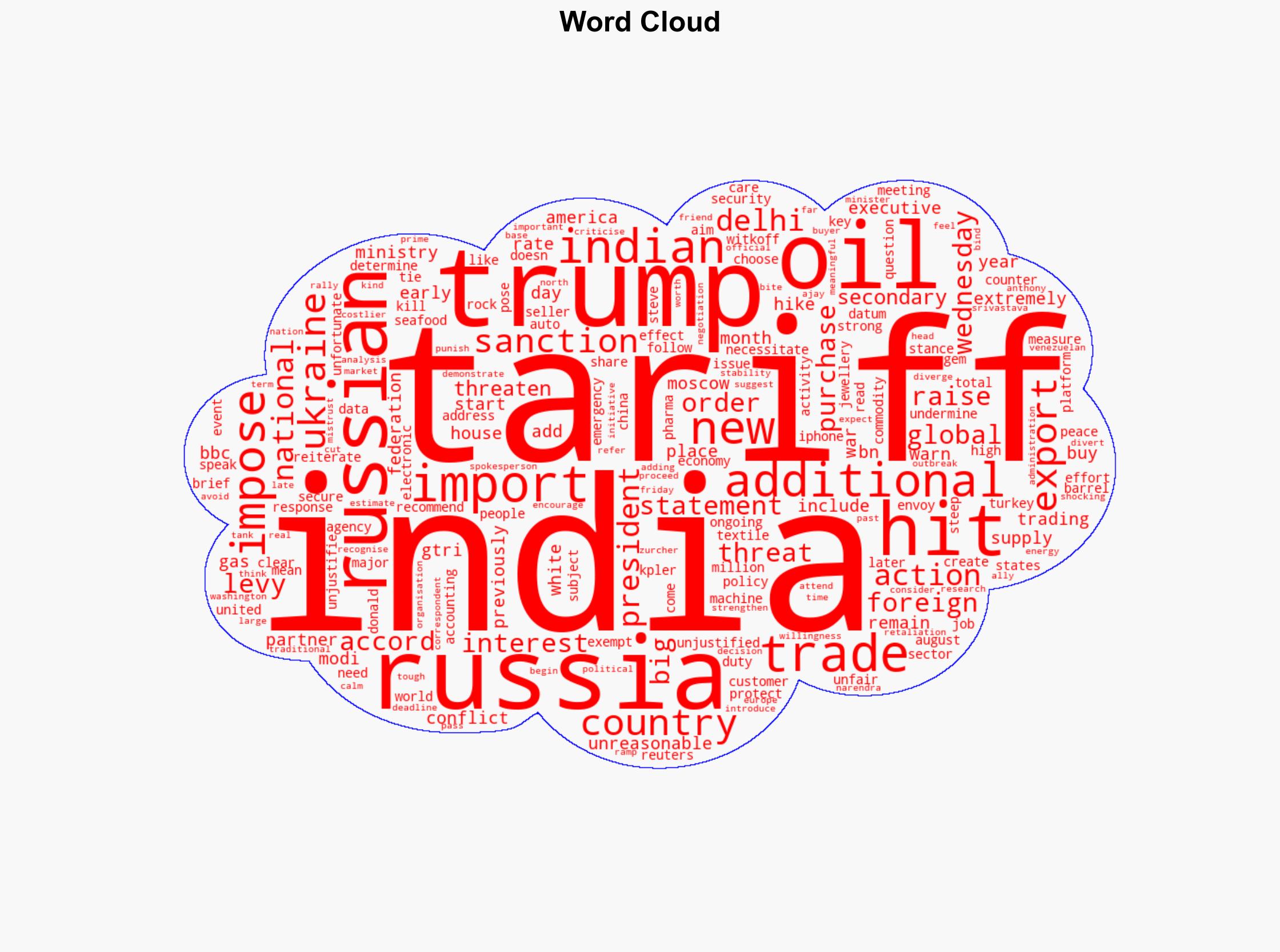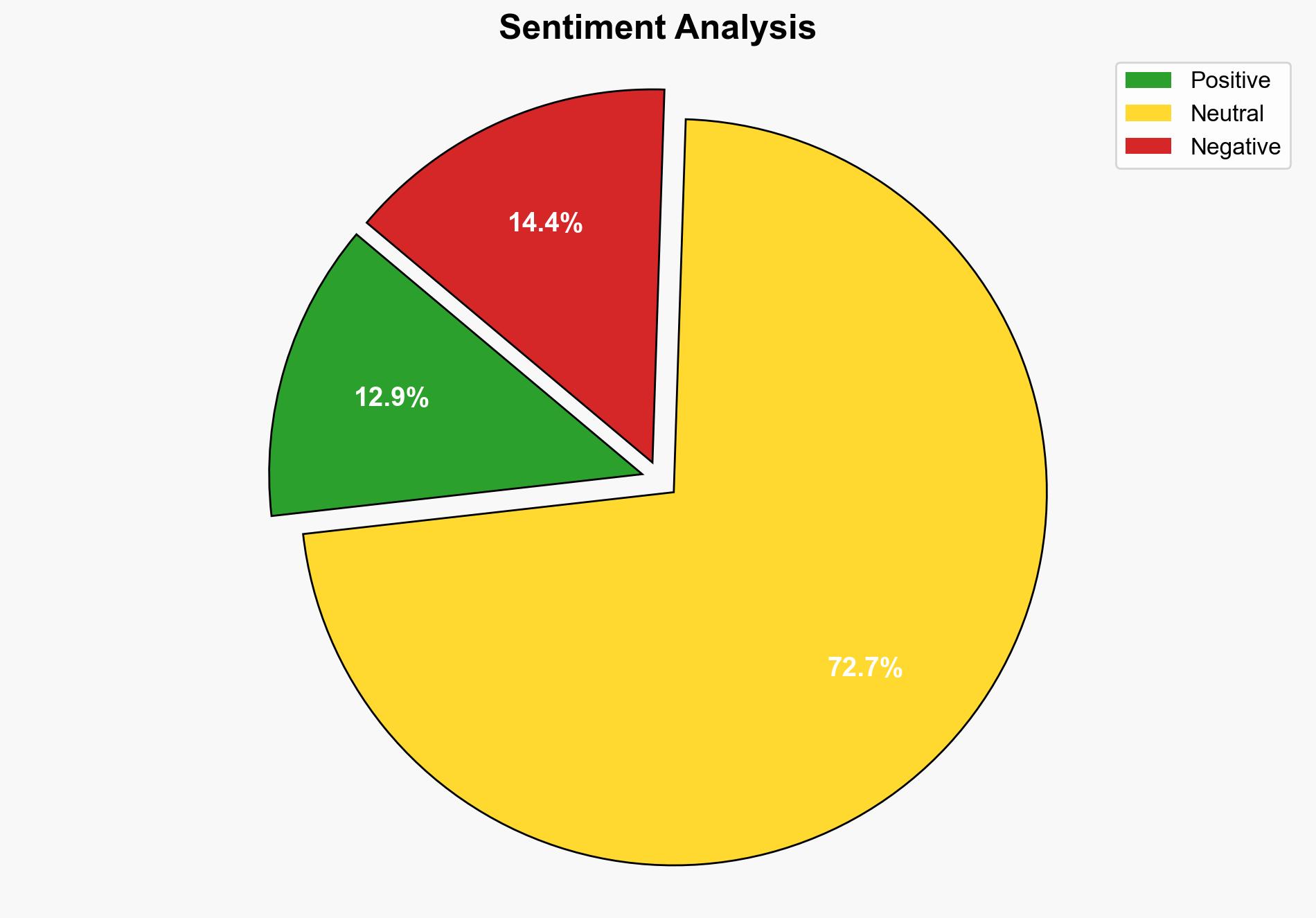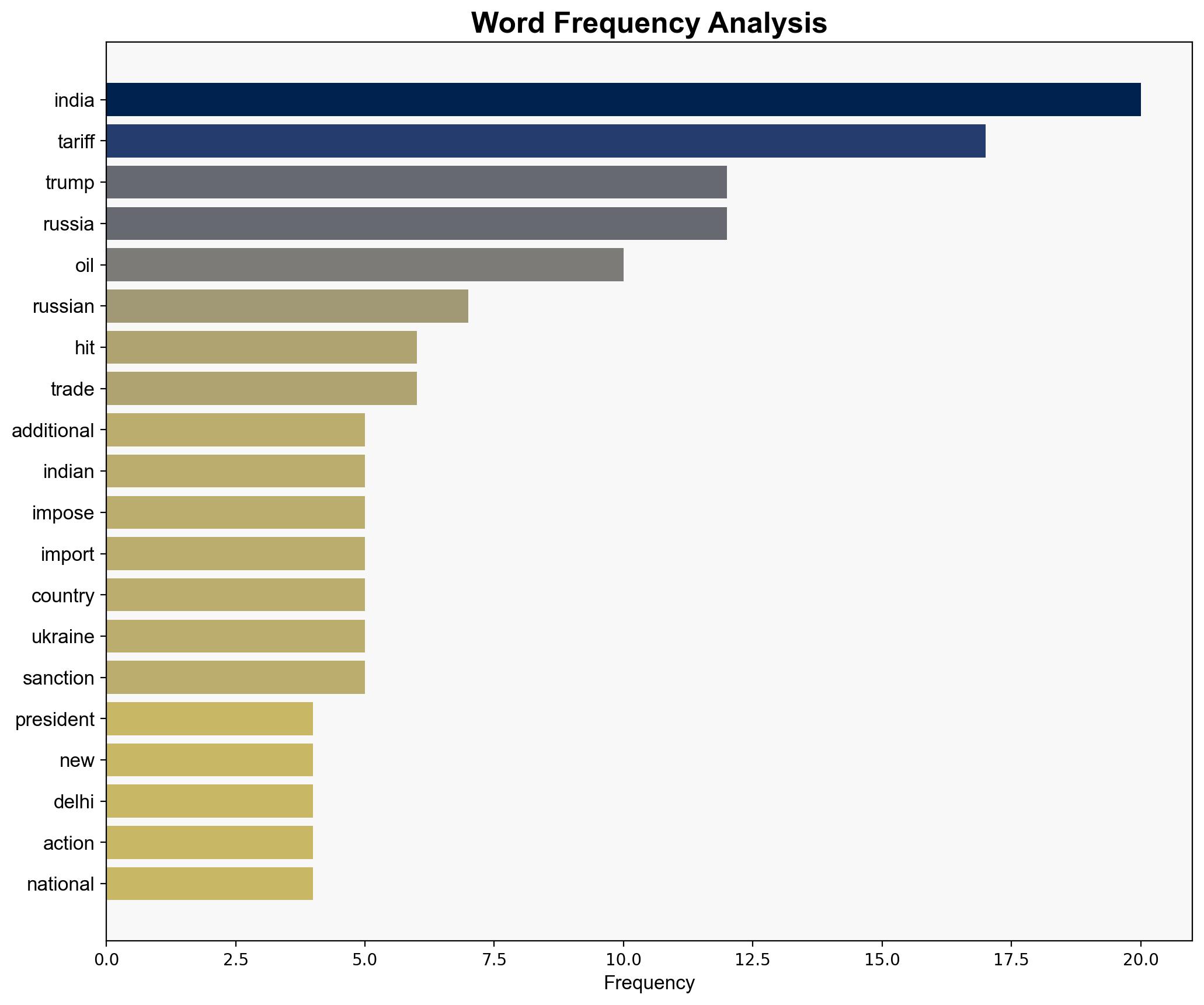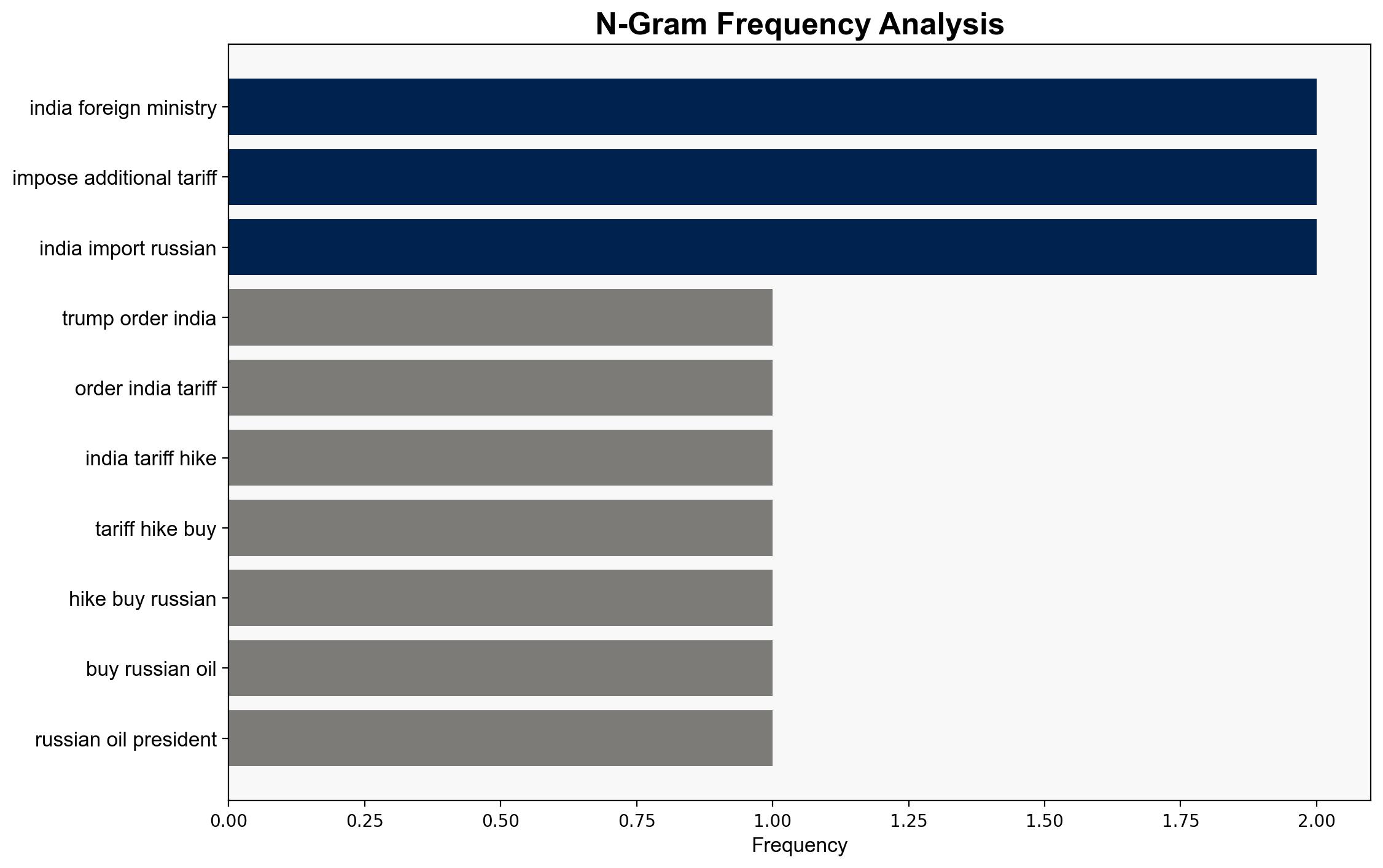Trump hits India with extra 25 tariff for buying Russian oil – BBC News
Published on: 2025-08-06
Intelligence Report: Trump hits India with extra 25% tariff for buying Russian oil – BBC News
1. BLUF (Bottom Line Up Front)
The imposition of a 25% tariff on Indian imports by the United States, due to India’s purchase of Russian oil, is a strategic maneuver by the U.S. to pressure India into aligning with its stance against Russia’s actions in Ukraine. The most supported hypothesis suggests this is primarily a geopolitical strategy rather than an economic one. Confidence level: Moderate. Recommended action: Engage in diplomatic negotiations to mitigate economic impacts while addressing geopolitical concerns.
2. Competing Hypotheses
1. **Geopolitical Strategy Hypothesis**: The tariff is primarily a geopolitical tool aimed at pressuring India to reduce its economic ties with Russia, thereby isolating Russia further on the global stage.
2. **Economic Leverage Hypothesis**: The tariff is an economic strategy to protect U.S. industries and leverage trade negotiations with India, using the Russian oil purchases as a pretext.
Using ACH 2.0, the Geopolitical Strategy Hypothesis is better supported due to the context of ongoing U.S. efforts to isolate Russia and the explicit mention of national security concerns in the White House statement.
3. Key Assumptions and Red Flags
– **Assumptions**: It is assumed that the tariff will effectively pressure India to change its oil import strategy. It also assumes India has the capacity to significantly alter its energy procurement without severe economic repercussions.
– **Red Flags**: The lack of detailed economic impact analysis on both U.S. and Indian markets is a blind spot. Additionally, the potential for India to retaliate or seek alternative alliances is not fully explored.
4. Implications and Strategic Risks
– **Economic Risks**: Increased tariffs could lead to higher prices for Indian goods in the U.S., affecting sectors like textiles and auto parts, and potentially leading to job losses.
– **Geopolitical Risks**: This action may strain U.S.-India relations, pushing India closer to Russia or other non-Western alliances, complicating U.S. strategic interests in Asia.
– **Escalation Scenarios**: Potential for retaliatory tariffs by India, leading to a trade war. Increased diplomatic tensions could impact broader U.S.-India cooperation on issues like cybersecurity and counter-terrorism.
5. Recommendations and Outlook
- **Diplomatic Engagement**: Initiate high-level talks with India to negotiate tariff reductions in exchange for commitments on reducing Russian oil imports.
- **Economic Analysis**: Conduct a thorough impact assessment of the tariffs on both economies to inform future policy decisions.
- **Scenario Projections**:
– **Best Case**: India agrees to reduce Russian oil imports, and tariffs are lifted, strengthening U.S.-India relations.
– **Worst Case**: India retaliates with its own tariffs, leading to a trade war and closer India-Russia ties.
– **Most Likely**: Prolonged negotiations with incremental adjustments to tariffs and oil import strategies.
6. Key Individuals and Entities
– Donald Trump
– Narendra Modi
– Steve Witkoff
– Russian Federation
– Global Commodity Data Platform (Kpler)
7. Thematic Tags
national security threats, geopolitical strategy, trade policy, U.S.-India relations





